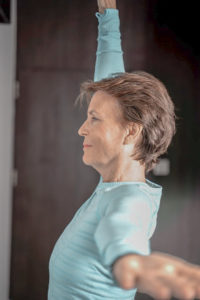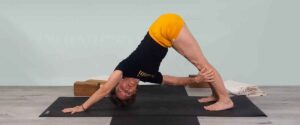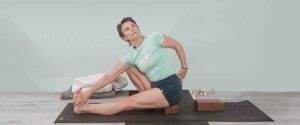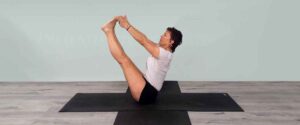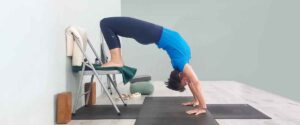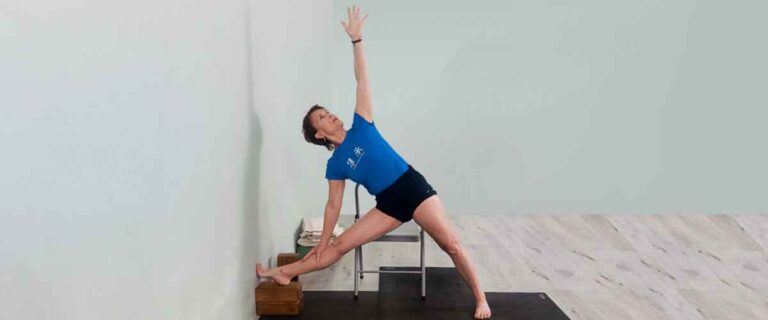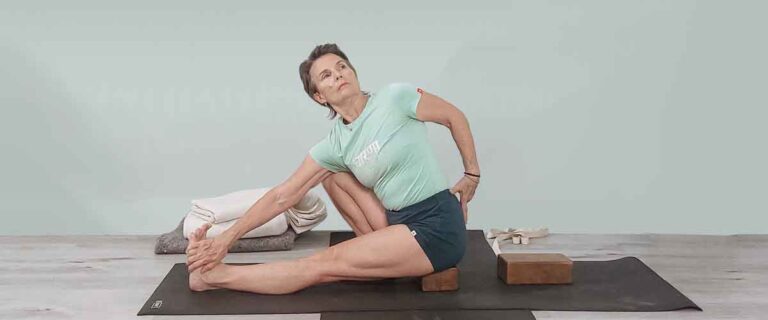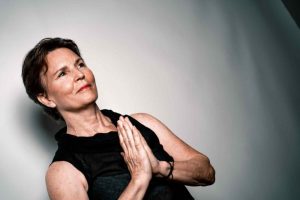Dr.Geeta Iyengar: “from the day menstruation begins until the day it ends, one should stick to the practice of those asanas that do not obstruct the menstrual flow and help a woman keep herself healthy”.
Day one of the menstruation until the end, which may take up to 7 days, one should stick to a practice that creates space, conserves and gives energy and helps to relieve symptoms while not obstructing the blood flow.
Attention must be given to keeping yourself healthy, sleeping as required, and eating a healthy balanced diet of easily digestible foods, vegetables and a combination of grains and fats. When you maintain a balanced nutritious diet, the craving for sugar and stimulants will wane.
The blood and nutrient loss require even more attention to foods rich in iron.
It is important to note a regular asana and pranayama practice will assist the body and mind, making the monthly cycle less stressful. It is through our yoga practice that we can reset our hormones and our nervous system. You will build balance in these systems, which will help with your overall strength, connectedness in the body, and clarity in the mind.
In the class today, we will practice a general group of asanas and sequencing for many conditions. To do a full practice, which is sequencing for the most benefits, more time is required. But in the short term, the classes I have prescribed will benefit a wide range of conditions, which will develop your understanding of the best poses for the condition.
Some benefits by category are below:
Standing forward extensions – preferably with head supported. Those suffering from body-aches, low blood pressure, low energy, sudden low blood sugar should avoid these postures.
Ardha chandrasana and Utthita Hasta Padangusthasana 11 help check heavy bleeding and abdominal cramping. Add these to your practice especially for those with lower back-pain, sciatica and/or slipped discs.
Supine (Lying ) poses – done with support of bolsters and belts, i.e. Supta Virasana, Supta Baddha Konasana etc. These poses relax the muscles and nerves, which are under constant strain and irritation. These poses help you to relax and slow down. They are great for water retention, heavy bleeding, abdominal cramping, and mental irritation.
Simple seated and standing forward extensions done in a restful state, will help you prevent extensive bleeding, and will soothe your abdomen. These will help reduce your suffering from headaches, backaches, heavy bleeding, abdominal cramps, and fatigue.
Seated asanas – These bring lubrication to your feet, ankles, and legs while flexing and loosening the joints. When the legs are soothed, the brain is calmed. For those with arthritis and swelling conditions, the time in seated postures provides a chance to give more attention to working on the areas, and will bring more circulation while relieving the joints without aggression.
Supported Viparita Dandasana and Setubanda Sarvangasana – Energize and stimulate the brain, chest, the lungs, and maintain hormonal balance. Important to add to your sequencing for the day.
Pranayama – If you have a normal cycle (without pain, headache, irritation, anxiety, and depression) you can do savasana, Ujjayi, and Viloma while seated. If you experience symptoms listed above, avoid a seated pranayama practice and do it in savasana.
What to avoid: All inversions, any abdominal contraction, back-bending as in Urdhva Dhanurasana, as well as knotting poses. If inversions are done during the normal cycle, your flow will be slowed or stopped suddenly. This is a time to release and expel. Much like other waste, i.e. urine, feces, phlegm, mucus etc, these are all excreted, and cannot or should not be held. If these are retained, disease is invited.
Create space: During your practice you will want to create openness in the pelvic and abdominal area in order to prevent pressure on the region. One example is in a standing pose, it is best that your legs are wide and your feet are hips width apart.
Once the cycle is ended completely, inversions are to be done, which will reset your hormonal balance. In special disorders, bleeding longer than normal, inversions may be prescribed but before you do that, seek out your local experienced teacher to advise you.
This is your health and you alone are responsible. This monthly pause button is a special process. Be grateful, welcome the time and space for yourself. Surrender to the inherent and magical beauty of being a woman who is uniquely able to bring the gift of new life to the world.
P.S. This sequence may also be done by women in menopause as well as men seeking a quiet practice that will bring relief from stress and anxiety. This type of restorative practice can be helpful for male disorders such as issues with the prostate.
Tadasana ( Mountain Pose )
Urdhva hastasana ( Palm Tree Pose )
Baddha Konasana ( Bound Angle Pose )
Upavistha Konasana ( Wide Angle Seated Forward Bend Pose )
Ardha Chandrasana ( Half Moon Pose )
Parsvottanasana ( Pyramid Pose )
Vajrasana ( Thunderbolt Pose )
Supta Virasana ( Reclined Hero Pose )
Adho Mukha Svanasana ( Downward Dog )
Supta Baddha Konasana ( Reclined Bound Angle Pose )
Supta Padangusthasana 1 ( Reclined Big Toe Pose 1 )
Adho Mukha Virasana ( Downward Facing Hero Pose )
Bharadvajasana with chair ( Torso Stretch Pose )
Bharadvajasana ( Torso Stretch Pose )
Sukhasana ( Easy Pose )
Adho Mukha Sukhasana ( Easy Pose Forward Bend )
Setu Bandha Sarvangasana ( Bridge Pose )
Supta Baddha Konasana ( Reclined Bound Angle Pose )
Savasana ( Corpse Pose )
Check out the useful link below for more information:
IFS- SIG Holistic Management of Menstrual Pain



